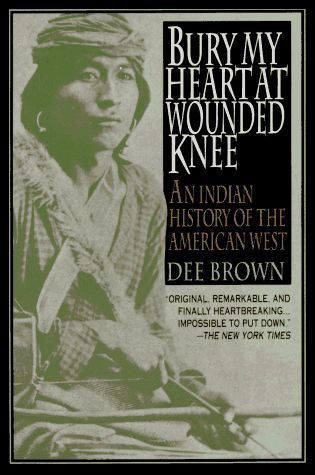
Bury My Heart at Wounded Knee An Indian History of the American West
A true classic of American history, Bury My Heart at Wounded Knee is Dee Brown’s eloquent, meticulously documented account of the systematic destruction of the American Indian during the second half of the nineteenth century. Using council records, autobiographies, and firsthand descriptions, Brown allows the great chiefs and warriors of the Dakota, Ute, Sioux, Cheyenne, and other tribes to tell in their won words of the battles, massacres, and broken treaties that finally left them demoralized and defeated. A unique and disturbing narrative told with force and clarity, this book changed forever our vision of how the West was really won.
Reviews
Nick Perronteau@nick_perr
Ashlyn@demonxore
Bill Mazza@kaakow
Jeni Enjaian@jenienjaian
Julie Berman@bookies
Bryan Alexander@bryanalexander
Chris Frees@chris
Martha F.@marthaq
Michael Cowell@chaosweeper
Dr Seth Jones@sdjones
Claire Matthews @clairefm
Jacqueline Wilson@wilssearch
Juliana@soundly
Jens Madsen@ingemann
Courtney@courto875
Anas A@kenkitano
Ewan@euzie
Cendrine Marrouat@haikushack
Daniel Hewitt@tiki801
Ethan Hussong@ehussong
Ethan Hussong@ehussong
Alice@alkay33
Fraser Simons@frasersimons
Caitlyn Baldwin@caitlynkbaldwin